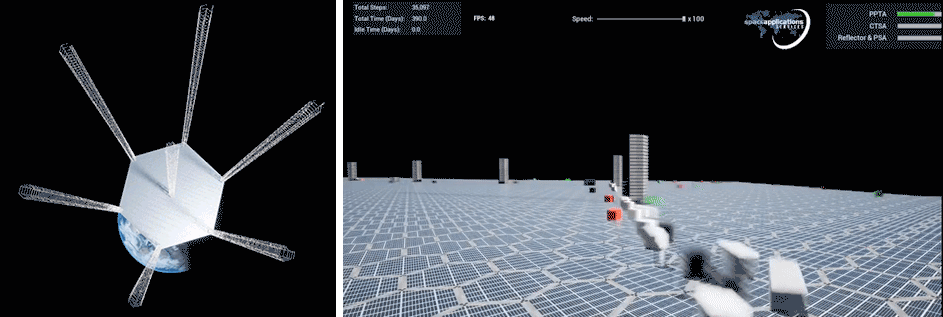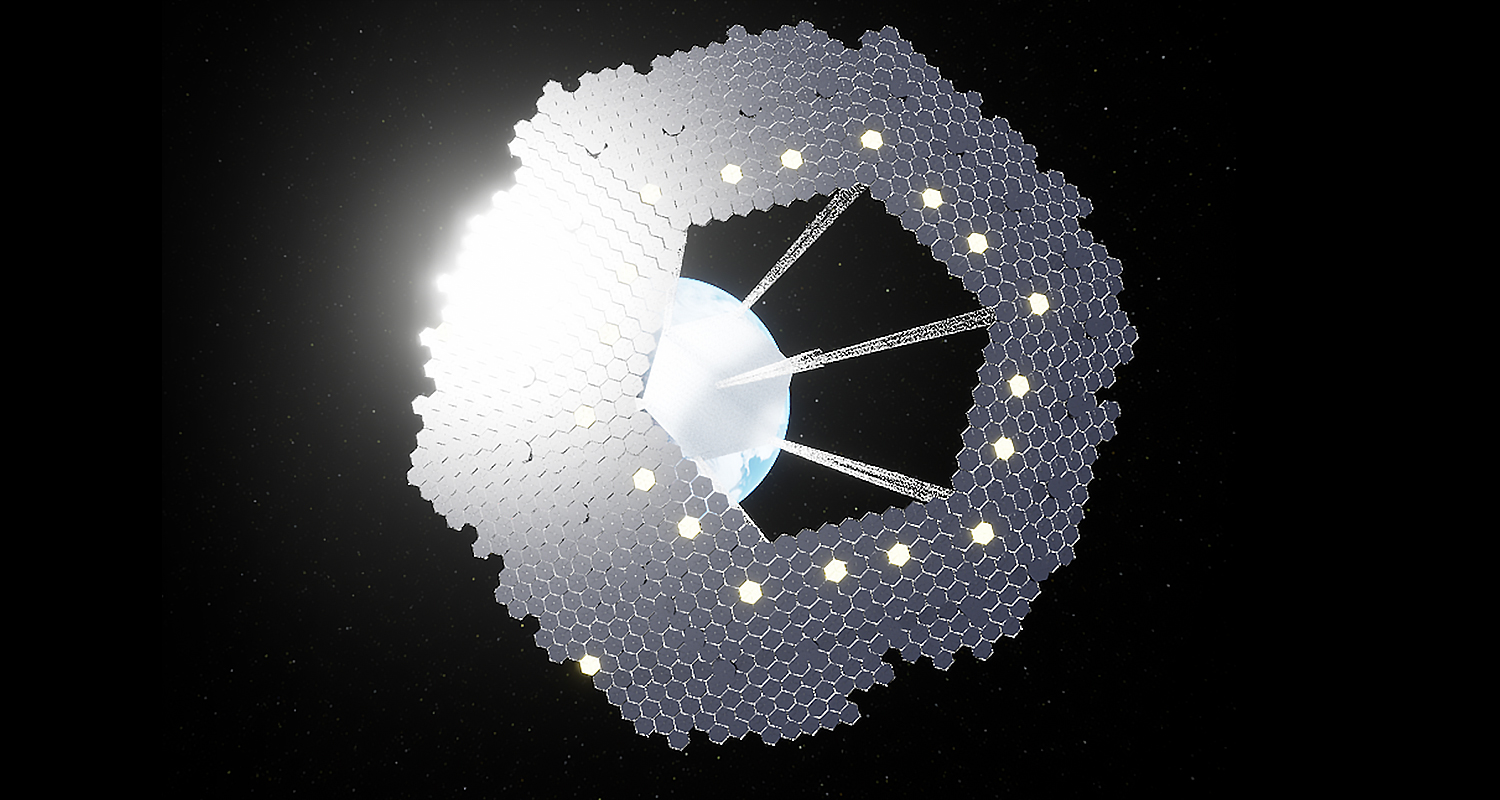Space Applications Services is thrilled to present the results of the SKYBEAM project at the 74th International Astronautical Congress (IAC). This study investigates the assembly, using European technology, of the kilometer-scale in-space systems required to revolutionise Earth’s energy harnessing solar power directly from space.
-
A New Dawn in Green Energy
SOLARIS is the European Space Agency’s (ESA) new initiative for enabling the future of sustainable energy from Space by exploring the feasibility of building a Space-Based Solar Power (SBSP) station in Earth’s orbit. SKYBEAM, is a precursor to SOLARIS funded by ESA’s Open Space Innovation Platform (OSIP). Unlike terrestrial solar plants, which are limited by atmospheric losses and day-night cycles, SBSP can provide constant, clean energy. “The potential of SBSP is enormous, and SKYBEAM is one of the first steps to make it a reality,” indicates Diego Urbina, the Future Projects and Exploration (FPX) Team Lead at Space Applications Services.
A Comprehensive Approach
The SKYBEAM team has left no stone unturned, conducting a rigorous literature survey of 27 historical SBSP concepts, reviewing over 150 sources to create a comprehensive database. Key parameters like photovoltaic efficiency, mass, power delivery and compatibility with European technologies for in-orbit assembly were considered. Solar Power Satellite via Arbitrarily Large Phased Array (SPS-ALPHA) was selected as the most promising architecture for this specific study. “We have proposed modifications to the SPS-ALPHA concept to make it compatible with European technologies for assembling large structures in space, including the HOTDOCK modular interconnect, MOSAR walking manipulator, and the ESA MIRROR Multi-Arm Robot (MAR). We have identified evolutions of these technologies to make them even more compatible with SPS-ALPHA” explained Mathieu Deremetz, Robotics Engineer in the Robotics, Mechanisms & Structures (RMS) Team at Space Applications.

Cutting-Edge Simulation and Logistics Analysis
The SKYBEAM team performed a detailed study of the delivery of the modules to their target location using SpaceX’s Starship. They employed Model-Based Systems Engineering (MBSE) techniques to create a representation of the system which includes structures spanning several kilometres. Additionally, they used Unreal Engine 5 for creating a highly detailed and user-friendly SBSP assembly simulation framework. This simulation explored 36 different cases to optimise the assembly process in space, replicating the millions of steps that myriad robots would need to take to assemble this extremely large system. “Our simulation framework can be used to gain insight into the concept of operations of the assembly process, and can simulate the assembly of any other space systems as large as SPS-ALPHA,” indicated Andres Martin Barrio, Team Leader of the Virtual Environments and Human Machine Interaction (VEHMI) team.
Financial Viability
The SKYBEAM project’s findings offer an intriguing glimpse into the future of the assembly of Space-Based Solar Power (SBSP). Through detailed simulations, the team has uncovered how the assembly time in space could swing dramatically—ranging from under 6 years to over 23 years for the parameter ranges studied—based on variables like launch frequencies, the number of docking and storage stations, and number of robots deployed. This insight not only underscores the complexity of the task but also opens the door to fine-tuning these variables for optimal efficiency. Financially, the study explored various scenarios, including a classical approach building the SBSP station with modules manufactured on Earth, as well as the Earth-based and Moon-based sourcing of raw material for modules. While modules from Earth is the default approach, the study indicates that obtaining materials from the Moon could become financially feasible under specific circumstances. The viability of the Moon-based option depends on at least two critical factors: the greater the use of lunar materials in the structures – the better, and conversely, the less cost-effective the chosen launcher to launch from Earth – the more financially attractive the Moon-based option becomes.
Promotional Video and Paper Presentation
To give a more in-depth look into the project, a promotional video has been released by Space Applications, available for viewing here. Additionally, a comprehensive paper detailing the project will be presented at the 74th IAC. “We believe this research will serve as an initial foundation for the adaptation and potential optimisation of the SPS-ALPHA, or for that matter any other new SBSP system assembly and delivery. The goal is to take advantage of technologies that are already in development today to make these ambitious projects a reality.” said the FPX Team Lead.
The activity was carried out under a programme of, and funded by, the European Space Agency. The views expressed in this publication can in no way be taken to reflect the official opinion of the European Space Agency.
News/SpaceApps/Communications & Media
